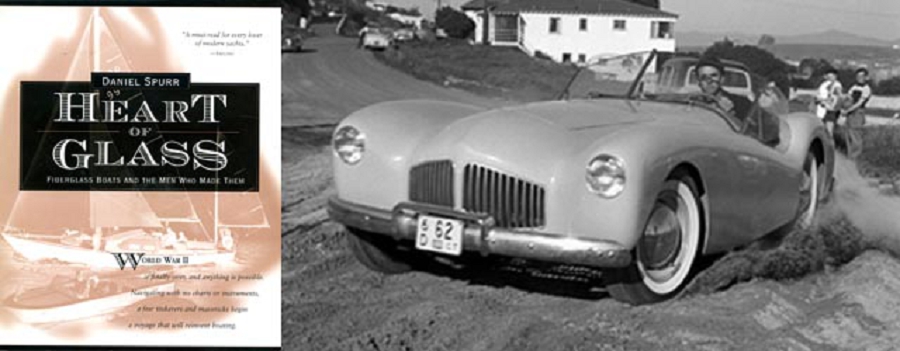
—————————
Note: This is the fourth in a series of articles on Bill Tritt, his legacy, and his impact on the boating and sports car world. For additional articles in this series on Bill Tritt, click on the link below.
Click Here To Review The Articles Published On Bill Tritt From “Heart of Glass”
—————————
Hi Gang…
It’s with a heavy heart that I share with each of you the news of the passing of Bill Tritt of Glasspar in March, 2011. He was 93 years old. Daniel Spurr, author of “Heart of Glass” which is a book about the history of “Fiberglass Boats and the Men Who Made Them” has given his permission to reproduce excerpts of his chapter that focused on Bill Tritt. I very much appreciate his allowing us to do so.
And now let’s review the next installment in a series of articles on the life and times of Bill Tritt.
Bill Tritt On The First Fiberglass Spar (Heart of Glass: Daniel Spurr, 2000)
In His Own Words
“The Dincat needed a mast, and divine intervention led me to discussions with young partners in Pacific Laminates, in a fishing rod manufacturing building across the alley from my two-car garage. This led to the concept of mommoth fishing rods – virtually, masts – and later, pole vaulting poles.
The result of discussions with the engineering genius of this company, Mort Barris, was a 19 foot phenolic-glass mast. Weighing 7 pounds and unstayed, none every failed. Correction: if you stepped on one on the dock, it split end to end.
This mast was perfect except for the cost: $45. It was such an untenable expense that I made up a wooden male mold and produced my own masts using polyester resin and glass cloth. These weighed more than the phenolic prepreg, but worked well and got the cost down.
Of course, if I had ever figured my time as having any value, may masts would have come close to costing $45 also.
For the Dinkitten, I made a two-part mast, which could be stowed in the boat. I sold one of the Dinkittens to a gentleman with a 70 foot yawl, and eagerly accepted his offer of a day of sailing. Attempting to handle his heavy spinnaker pole convinced me that FRP would be an improvement.
He agreed, and I made a barrel-tapered pole for him, which was substantially lighter and still didn’t fail – a surprise for both of us.
I never sold another spinnaker pole, of course.”
Thoughts on the Article:
We tend to think of Bill Tritt’s company “Glasspar” as the car and car body manufacturing company. At least I do. Bill reminded me more than once that more than 80% of what his company did was boat related, but he enjoyed the cars too
This chapter from “Heart of Glass” focuses on the beginnings of Glasspar, their creation and building of boats and cars, and the end of the company. By providing this complete history of Glasspar, it’s our hope here at Forgotten Fiberglass that each of you will have a greater appreciation of the industry – and Bill Tritt and Glasspar – as a whole.
Also… it’s neat that in the story above, Bill mentions the location of his business “across the alley from my two-car garage.” This “two car garage” was Glasspar’s first location where there was mostly just “Bill” as the prime mover and shaker in the building.
This was on Industrial Way in Costa Mesa, California, and in the recent past I spent a day in Costa Mesa learning about each of Glasspar’s locations and how they fit into the community. This is also where Bill Tritt met and influenced Eric Irwin who built the fiberglass Lancer sports car.
More about that in a future story
Popular Science: July 1952
This Boat Mast Is Made of Glass, But Won’t Break
I also found the following related article in a ’52 issue of Popular Science. The man swinging from the mast in the center is none other than Bill Tritt himself. Here’s what the article had to say:
A 160 pound man can swing from the middle of this 19 foot boat mast and it may bend a bit – but it won’t crack or break. It is made by wrapping glass-fiber cloth around and around a form revolving on a mandrel. When slipped from the form, the spiral wrappings – nine layers thick at the base decreasing to five turns at the tapered tip – produce the hollow mast. Weight? Only nine pounds.
Summary:
That’s the next installment of the chapter on Bill Tritt in Daniel Spurr’s book titled “Heart of Glass” and with his approval, we will reproduce parts of this same chapter here at Forgotten Fiberglass to honor Bill’s memory.
Thanks again to Daniel Spurr for this support in sharing these stories with us. Those of you interested in purchasing new or used copies of this book on Amazon.com, click on the link below:
Heart of Glass Copies on Amazon.com
Hope you enjoyed the story, and until next time…
Glass on gang…
Geoff
——————————————————————-
Click on the Images Below to View Larger Pictures
——————————————————————-
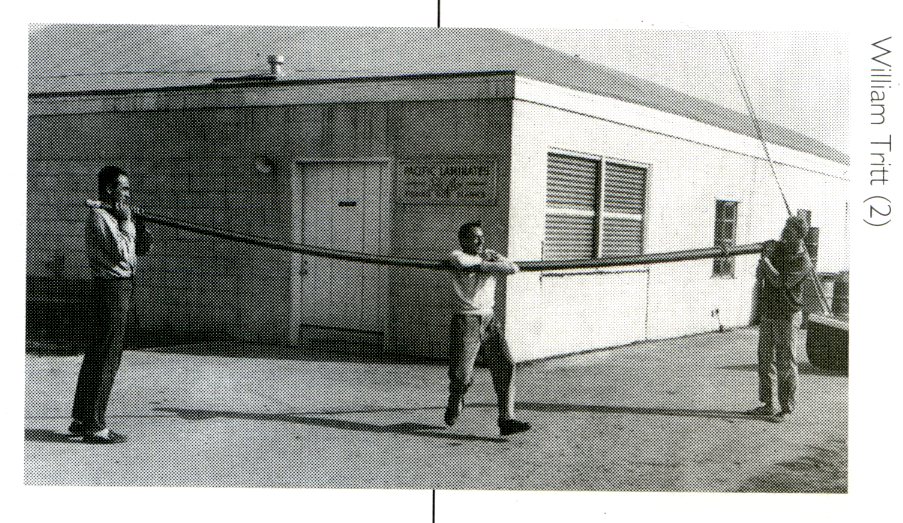
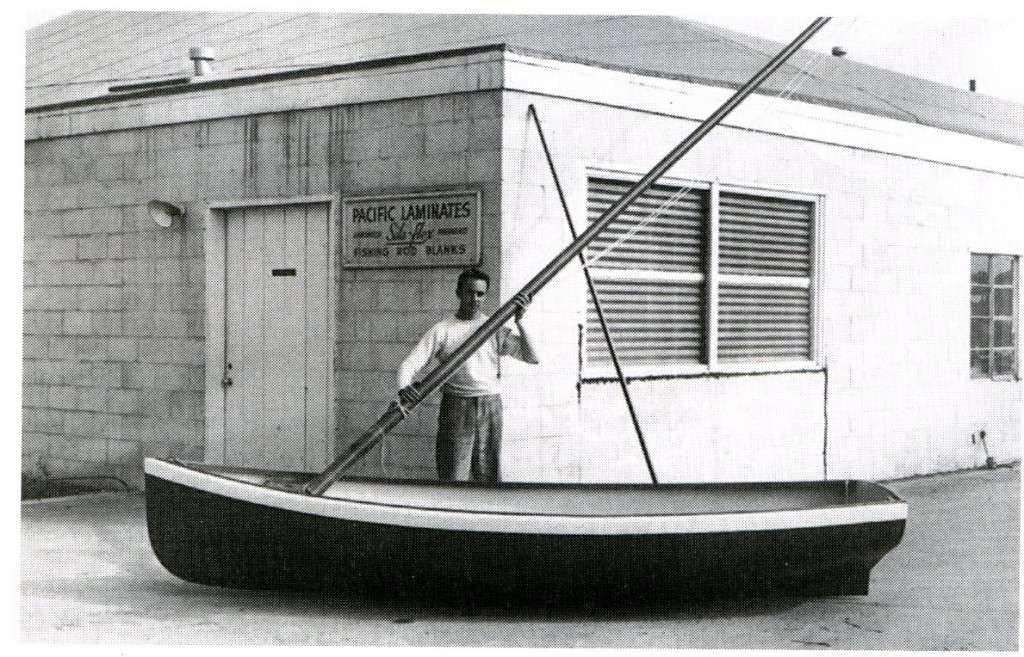
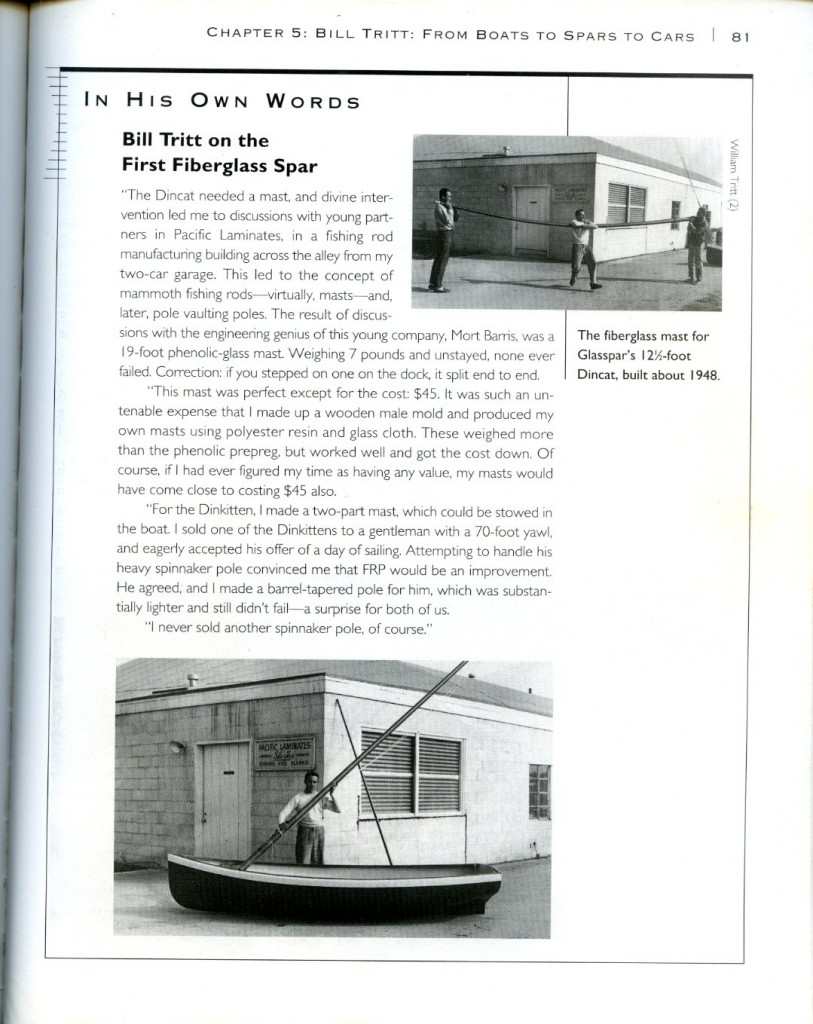


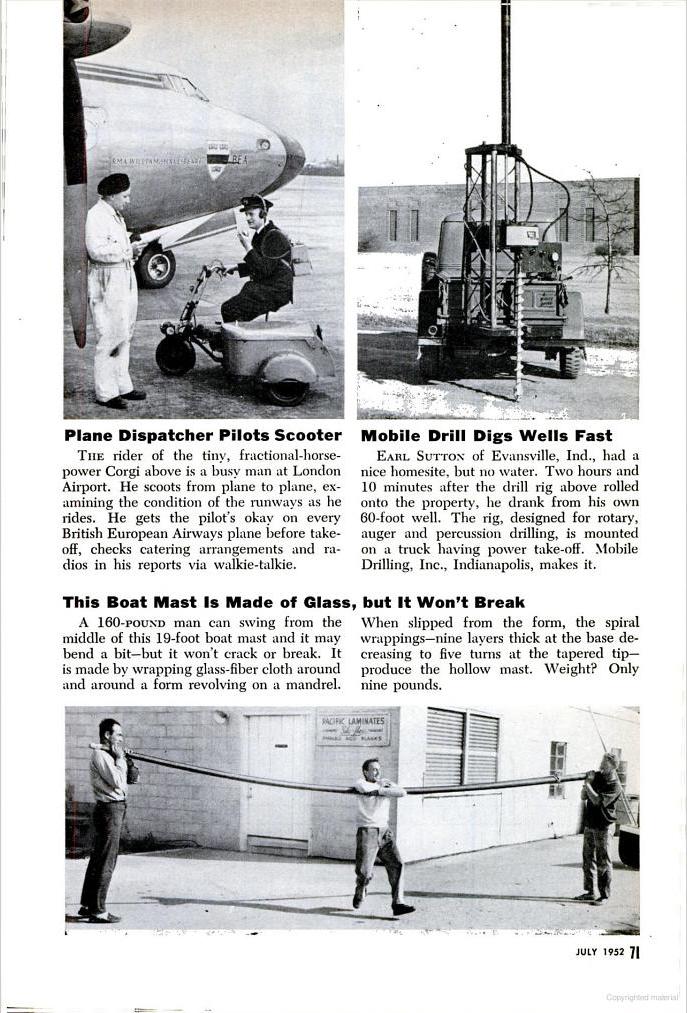

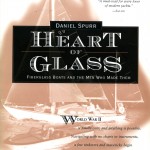
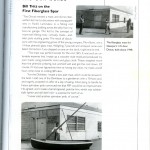
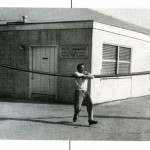
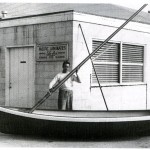
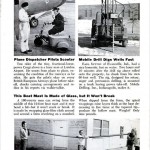
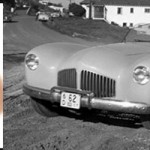
Just acquired a Dincat 12 today in original shape needs work , wonder if IU can get more info on it ? I have the tiller , dagger board, and sail GC sewn on the top in red.
The number on the hull is MS17 what significance is that I wonder,
Any feed back would be great , I’m thinking on hoe to restore it with respect to it’d original look.
thankyou. Erik. Huntington Beach
I was the activity director at the facility where Bill Tritt lived when he passed. I was just thinking about him and pulled up pics of the G-2 to show my husband. He agreed…beautiful design. I remember asking Bill why he named it G-2. He said: because it sounded better than G-1. He gave me a lap desk that had storage in it. I still have it today. I keep my manicure items and nail polishes in it. I was wondering if Bill’s son still lives in WV?
Geoff,
Great article but I didn’t see mention of the Tritt designed Privateer a 20′ Cat Ketch. We owned one as a kid and my dad bought one in ’59 from Bill. We are currently looking for one if anyone knows the whereabouts of the few that were produced.
Thanks!
I have one and am willing to sell it. It is in California and in rough shape. It comes with a trailer.
Calvin; Is your privateer still for sale? Or is it the one that was posted on Craigslist about a year ago in Richmond? I bought that one. But I am still looking for more. I own two. One almost ready to launch and one that is a project.(yours?)
I still have the Glasspar Privateer. It has just sat on a trailer in my back yard all this time. I would like to sell it.
My family owned a Dinkitten in the mid 1950s when I was 6 and 7 years old. It was hull #58. We rowed it, sailed it, and motored around Santa Barbara harbor with a 3 hp Evinrude. Great boat.
Thanks for the plug for Heart of Glass, and dad, Geoff. How I wish that I still had the Dincat that my brother Greg and I owned sequentially, but was lost to a spiteful former girlfriend. These things seem to happen!
Matt
Good Day ,
I have a DinCat with a Hull # MS17 I’m wondering if you can give me some information on this?
ewmohler@earthlink.net